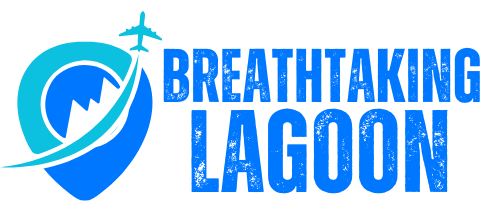Friday, March 28, 2025

As the US hotel industry prepares for the summer of 2025, it faces a landscape shaped by shifting leisure and international travel patterns. While beach resorts and major urban centers are set to see steady demand, changes in traveler behavior — such as an increase in solo travel and a decline in international visitors from key markets — are requiring hoteliers to adapt quickly. With fluctuating booking windows and economic uncertainties affecting corporate travel, hotels are embracing flexible strategies to capture demand from evolving segments, ensuring they remain competitive and responsive to these new travel trends.
As hoteliers across the United States prepare for summer 2025, the outlook is both promising and uncertain. The season’s potential depends largely on geographic and property-specific variables, reflecting long-standing industry dynamics.
The surge in domestic travel that followed the pandemic recovery has started to normalize, especially as international travel and cruise vacations become more accessible again. This shift is reshaping travel behavior and influencing summer demand across various hotel segments.
Stability in Beach and Destination Markets
Many beach and destination-oriented markets are expected to perform at levels similar to 2024. While record-breaking results may not be on the horizon, occupancy levels and revenue are projected to remain stable. Popular vacation zones like South Florida and California beach communities continue to draw high visitor numbers, while secondary markets are gaining interest as travelers explore beyond traditional tourist hubs.
Urban centers are also rebounding, with cities like New York and San Francisco seeing renewed activity. The return of large-scale events, entertainment, and corporate meetings is supporting demand in these metro areas.
New England Resort Markets Show Balance
Hotels in New England and other resort-style regions are preparing for a balanced season, with peak months July and August showing pace similar to last year. Although substantial growth is not anticipated, the lack of major declines indicates stability across the portfolio. In some cities, such as Boston, increased corporate activity in sectors like finance and information technology is contributing to weekday occupancy growth.
Leisure Travel Sees New Patterns
Among leisure travelers, new trends are shaping demand in unexpected ways. Solo travel is becoming more common, driven by individuals seeking unique, personalized experiences. This shift is prompting properties to enhance offerings with curated amenities, tailored experiences, and social opportunities that cater to independent travelers.
Additionally, travel related to sports events is increasing, bringing transient demand to both large and smaller urban areas. This includes professional sports tourism, youth tournaments, and university athletic events — all contributing to weekend and off-peak demand.
Economic Caution Affects Corporate Travel
Despite the positive signals in some segments, economic caution continues to influence corporate travel. Ongoing market volatility and policy uncertainty are prompting companies to reduce travel budgets or delay decisions, particularly for non-essential trips. Hotels that rely on weekday corporate business are experiencing delayed bookings or reduced length of stay as companies remain conservative with spending.
The need for clearer economic direction is becoming more critical for revitalizing the business travel segment. Without consistent federal policy signals and market stability, large-scale corporate demand is likely to remain tempered throughout the summer season.
Booking Window Becomes Increasingly Divided
One of the most telling signs of travel behavior changes is the shift in booking windows. Hoteliers are observing increased bifurcation, with guests either booking well in advance or waiting until the last minute. The middle period — between 90 and 45 days prior to arrival — is seeing weaker activity.
This pattern reflects economic confidence and disposable income disparities. Travelers with stable finances are locking in vacations early, while others wait for deals or assess their ability to commit closer to travel dates. This divide is especially prominent in the transient leisure segment.
Group travel and corporate bookings tend to follow more predictable cycles, but transient behavior is increasingly difficult to forecast. Marketing and revenue strategies are being adapted to account for these split behaviors with incentives for both early and late bookings.
Premium and Resort Properties Secure Early Commitments
High-revenue resort hotels are benefiting from early booking trends, particularly those in popular beach destinations. This is partially driven by limited room availability during peak weeks and a strong desire among travelers to secure preferred accommodations.
Booking windows at these properties often stretch five to six weeks or more, far longer than the one-week window typical of urban business hotels. This extended lead time allows resorts to plan staffing and service levels more accurately, even as other hotel segments face unpredictability.
Still, even among resorts, last-minute bookings are a significant portion of overall demand. Many travelers are influenced by airfare trends, personal budgets, or external factors like weather or events, prompting shorter planning cycles.
International Inbound Travel Faces New Challenges
The international inbound segment continues to face significant hurdles. While traditional markets like Canada, Mexico, and South America previously provided consistent volume, demand from these regions has declined in 2025. Travel advisories, geopolitical tensions, and trade-related factors are leading travelers from these regions to choose alternative destinations.
Inbound travel from Asia, particularly China, remains below pre-pandemic levels, with the decline more pronounced in major cities like Chicago and Boston. There is potential for increased travel from Japan to offset some of this gap, but the shift has yet to fully develop.
International travelers are still arriving in gateway cities on the East Coast and in California, particularly in South Florida, which continues to attract tourists from Latin America. However, the overall share of international guests remains suppressed compared to previous years.
Government Travel Reductions Impact Key Markets
Federal agency cutbacks and reduced government spending have significantly impacted direct and indirect government-related hotel stays. This is particularly concerning for properties located near military bases, federal offices, or cities with large government contracts.
Hotels with heavy reliance on the government segment — in some cases up to half of total demand — are now pivoting to attract more group, leisure, and corporate transient bookings. However, the competition for these alternative segments is intense, and not all properties are equipped to reposition their marketing efforts effectively.
Hotels with a more balanced mix are experiencing less disruption, but the drop in government-related bookings is still noticeable. Nationwide, the government demand segment is expected to decline by approximately 15% year-over-year through the spring and early summer.
Efforts to offset this decline through retail, discount, or group travel have not fully made up the difference. Many hoteliers are focusing on dynamic pricing strategies and exploring partnership opportunities with new distribution channels.
The US hotel industry is adjusting to changing leisure and international travel patterns for summer 2025, with a rise in solo travel, fluctuating booking windows, and shifts in international demand requiring flexible strategies to maintain competitiveness.
A Patchwork Summer for U.S. Hotels
The summer 2025 travel season for U.S. hotels is shaping up to be highly segmented and market-specific. While beach destinations and urban centers in recovery mode are expected to perform relatively well, macroeconomic uncertainty and international headwinds continue to suppress growth in other areas.
Booking behavior remains unpredictable, with travelers either committing far in advance or waiting until the last possible moment. This places increased pressure on hotel operators to forecast demand accurately and allocate resources strategically.
Segments such as solo leisure travel and sports-related tourism present new opportunities, while traditional segments like government and corporate travel remain vulnerable to external factors. Hotels that succeed this summer will be those that remain agile, leverage local demand opportunities, and respond quickly to changing consumer behaviors.
There is no one-size-fits-all approach to summer 2025. Success will be determined by how well hotels understand their unique market conditions, diversify their demand channels, and adapt to the realities of a transforming travel economy.





